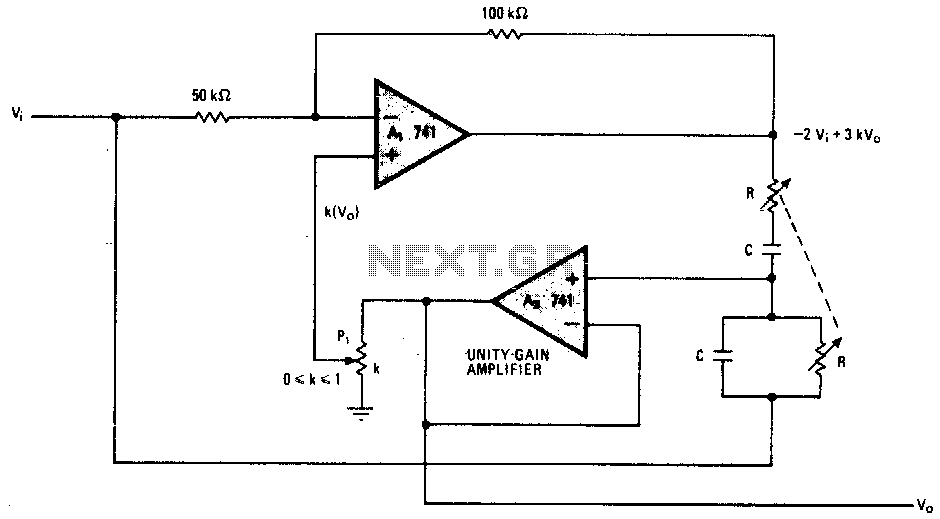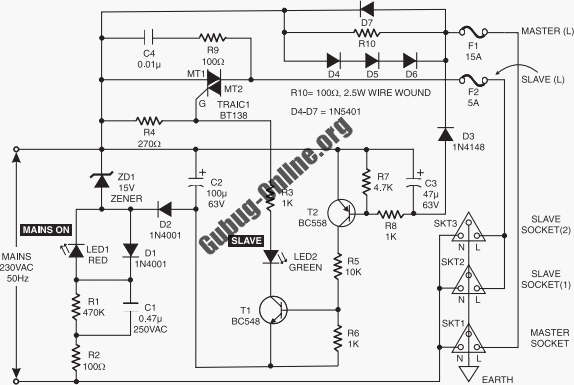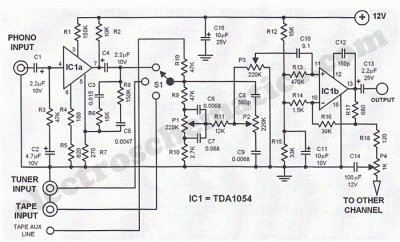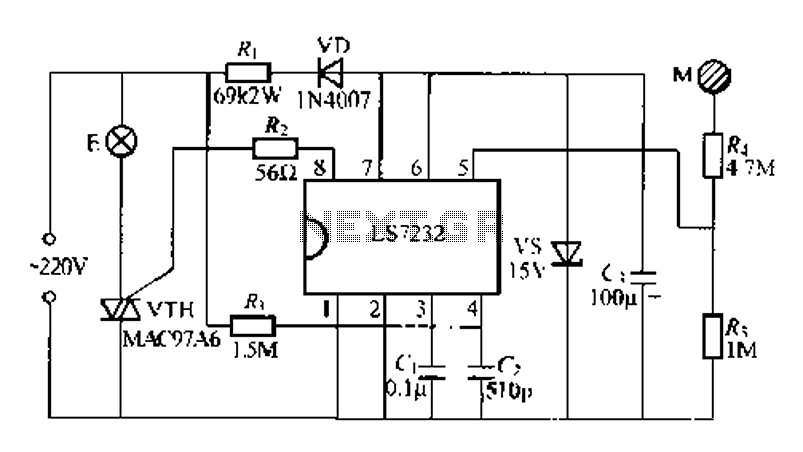
Band 2 Preamplifier
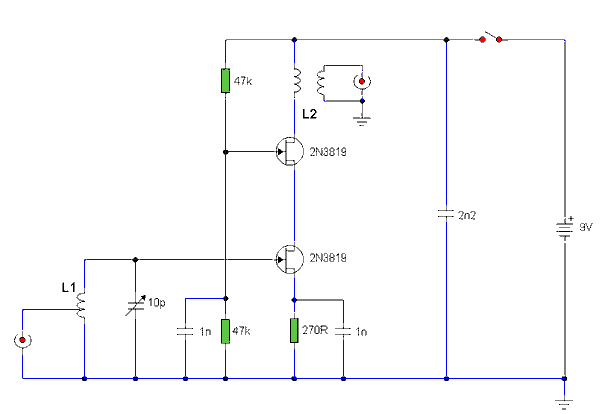
The circuit utilizes two 2N3819 FETs configured in a cascode arrangement. The lower FET functions in common source mode, while the upper FET operates in common gate mode, achieving full high-frequency gain. The lower FET is tunable, enabling peak reception for a specific station. Coil specifications will follow.
The described circuit employs two 2N3819 field-effect transistors (FETs) arranged in a cascode configuration, which is advantageous for enhancing gain and bandwidth in high-frequency applications. The lower FET, operating in common source mode, serves as the primary amplifying element, providing a significant voltage gain. This configuration allows for improved input and output impedance characteristics, which is essential for maintaining signal integrity.
The upper FET, functioning in common gate mode, contributes to the overall gain while also providing isolation between the input and output stages. This arrangement minimizes the Miller effect, thus allowing for higher frequency operation without significant degradation of performance. The cascode configuration is particularly effective in RF applications, where maintaining signal fidelity over a range of frequencies is critical.
The tunability of the lower FET is a key feature, enabling the adjustment of the circuit for optimal performance at a desired frequency, which is particularly useful in applications such as radio receivers where precise tuning to specific station frequencies is required. The circuit design should also include appropriate biasing networks to ensure that both FETs operate in their linear regions, thus maximizing the efficiency and linearity of the amplifier.
In addition, careful selection of passive components, such as resistors and capacitors, is necessary to tailor the frequency response and stability of the circuit. The coil details mentioned will likely specify the inductance values and winding configurations that complement the FETs' characteristics, further enhancing the circuit's performance in its intended application. Overall, this circuit design exemplifies a sophisticated approach to high-frequency amplification using FET technology.The circuit uses two 2N3819 FET`s in cascode configuration. The lower FET operates in common source mode, while the upper FET, operates in common gate, realising full high frequency gain. The bottom FET is tunable allowing a peak for a particular station. Coil details follow: 🔗 External reference
The described circuit employs two 2N3819 field-effect transistors (FETs) arranged in a cascode configuration, which is advantageous for enhancing gain and bandwidth in high-frequency applications. The lower FET, operating in common source mode, serves as the primary amplifying element, providing a significant voltage gain. This configuration allows for improved input and output impedance characteristics, which is essential for maintaining signal integrity.
The upper FET, functioning in common gate mode, contributes to the overall gain while also providing isolation between the input and output stages. This arrangement minimizes the Miller effect, thus allowing for higher frequency operation without significant degradation of performance. The cascode configuration is particularly effective in RF applications, where maintaining signal fidelity over a range of frequencies is critical.
The tunability of the lower FET is a key feature, enabling the adjustment of the circuit for optimal performance at a desired frequency, which is particularly useful in applications such as radio receivers where precise tuning to specific station frequencies is required. The circuit design should also include appropriate biasing networks to ensure that both FETs operate in their linear regions, thus maximizing the efficiency and linearity of the amplifier.
In addition, careful selection of passive components, such as resistors and capacitors, is necessary to tailor the frequency response and stability of the circuit. The coil details mentioned will likely specify the inductance values and winding configurations that complement the FETs' characteristics, further enhancing the circuit's performance in its intended application. Overall, this circuit design exemplifies a sophisticated approach to high-frequency amplification using FET technology.The circuit uses two 2N3819 FET`s in cascode configuration. The lower FET operates in common source mode, while the upper FET, operates in common gate, realising full high frequency gain. The bottom FET is tunable allowing a peak for a particular station. Coil details follow: 🔗 External reference
